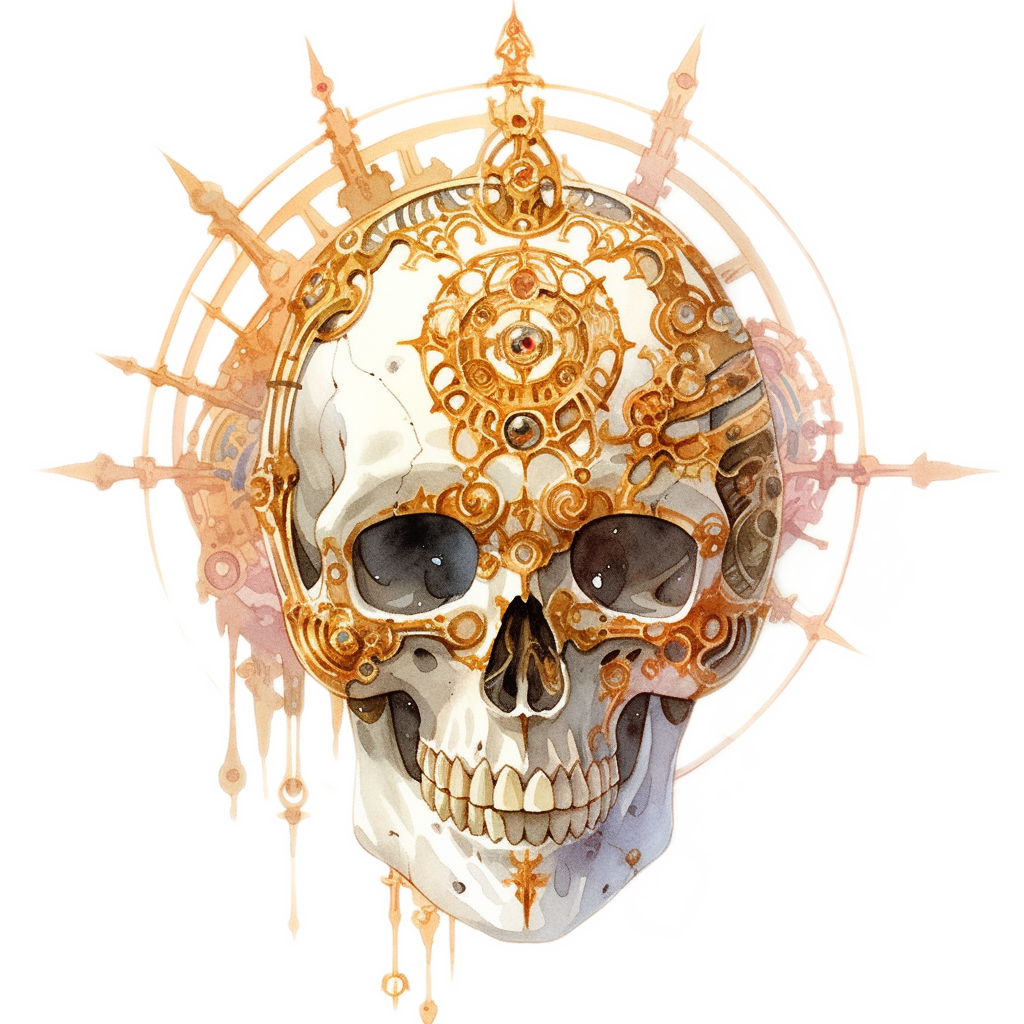The Abyss: a Bloody, Awful Plane to be Stuck on

Also known as: The Demonholme, the Bottomless Pit, the Planar Rift
Hate it or really hate it, there’s no denying the fact that the Abyss is simply much bigger than any plane has a right to be. It’s a quandary that’s foxed many a Guvner sage, who love nothing more than fitting things into neat little boxes. Well, as they’ve found with the years (and untimely passing of many a Guvner sage), any box that can fit the Abyss into it will neither be neat, nor little. Here then is the next best thing; a running record on my mimir of the prominent sites of the Abyss, new layers discovered, and burgs to visit or avoid. ‘Course, the Guvners probably know more than I, but seeing as I ain’t one of them (and have no intention of joining ’em just for their Abyssal darks), you’ll have to take what I can glean from garnishing my contacts…
Oh, and if you ever think about going to the Abyss, give your brain-box a rattle and then think again!

Themes of the Plane: Depravity, perversion, violence, the list is practically endless. Any kind of vice that considers only the interest of the perpetrator, and cares not a jot for anyone or anything else. The ultimate plane of complete freedom to do whatever you desire, provided you have the cunning or might to get away with it.
Description: The Abyss is a rift in the Great Ring, an endless wound in the fabric of the planes where the worst things from outside the multiverse can slip in. Depending on who you ask it was created by the obyrith, occurred naturally, was caused by the Outer Gods ripping open the multiverse to peer inside, or coalesced from all of the worst parts of the great Maelstrom. The rift can be seen in its truest form on the fourth layer, called the Grand Abyss, which is literally that; just endless cliffs of a chasm that descends down into the darkness, possibly forever. On the way down there are gates that lead to other fractures in reality, which are the countless other layers of the Abyss. Some of these are natural, others drilled out by powerful Abyssal denizens, and still more were tunnelled out from the inside. Those are the ones to avoid the most, cutter.
Pazunia, the first layer of the Abyss, also contains countless gates to other layers, found in pits that scar the surface of the layer. There are also many, many gates and secret paths between the layers, in a confusing web of connections that could have been designed by a drunk spiderfiend. Anyone who claims to see a pattern in how the Abyss is organised is either barmy, a liar, or both. The Guvners, bless their misguided lawful little hearts, have made a valiant attempt at cataloguing the layers, numbering them in order in which they discovered them. They got scared halfway through and sealed the book so for the rest of us, it’s an incomplete list. Other cutters have also attempted the same task, and of course because it’s the Abyss, the numbering systems are chaotic. For example, the immortal archfey Iggwilv spent far more thing in the Abyss than is advisable and catalogued many hundreds of layers, using different numbers. So a word to the wise – double check which system you’re talking about before making an ill-advised one-way trip to the dead book. I’ll be exclusively using the Guvner system on this here mimir, unless I’m not. If you find inconsistencies with other sources, then welcome to the Abyss.
Rulers: Obviously, there are far too many to mention them all here, but there are some names that crop up time and time again. Learn them and remember not to speak them, lest you draw their attention. These bloods are the so-called tanar’ri princes, although some of them may actually be obyrith. We’ll talk about that another time.
- Abraxas, the Master of the Final Incantation. Tana’ri prince of forbidden magic, lore and snakes. An utterly demonic creature in appearance, he controls the layers of Pleroma (layer 41) and Death’s Reward (layer 17).
- Angazhan, the Ravener King. Tanar’ri lord of savage strength, destruction and apes. Appearing as an enormous, muscular bar-lgura, complete with fangs and horns. His realm goes by many names, one of which is Ahvoth-Kor (layer 90).
- Baphomet, the lord of the minotaurs. Tanar’ri lord of mazes, beasts and minotaurs. He appears as a winged bestial bull-goat demon with huge fiery horns. The Endless Maze (layer 600) is his realm.
- Cyth-V’sug, the prince of the blasted heath. Tanar’ri lord of fungus, disease and parasites. One of several tanar’ri lords of rot, Cyth-V’sug uniquely used to be a qlippoth but was transformed into a tanar’ri after spending aeons battling against them. Of course, this didn’t stop the battles. It controls the 220th layer, an immense fungal creature called The Jeharlu.
- Dagon, the Shadow in the Sea. The tanar’ri lord of deformity, sea monsters and dark tides. This tanar’ri is a nightmare of writhing tentacles with the maw of a deep sea predator. He controls the Ocean of Despair (layer 50) and the seas connected to it.
- Demogorgon, the Prince of Demons. The tanar’ri lord of insanity. Their two heads have individual minds . Demogorgon rules the Gaping Maw (layer 88).
- Deskari, the Lord of the Locust Host. The tanar’ri lord of chasms, infestation and locusts. Deskari rules the Rasping Rifts (layer 233), vermin infested chasms and canyons.
- Gogunta, the Song of the Swamp. The tanar’ri lord of amphibians, boggarts and swamps. He dwells in a realm called Maphizin in the Horrid Sea (layer 50) which is otherwise controlled by Dagon.
- Graz’zt, the Shadow King. Tanar’ri prince of base instinct, lust and seduction. A tall, dark and handsome creature, Graz’zt is considered the comeliest demon in the Abyss. He rules the city of Azzagrat, which spans three layers of the Abyss (layers 45, 46 & 47).
- Kostchtchie, the Deathless Frost. The tanar’ri prince of frost, giants and revenge. He forced Baba Yaga to make him immortal, which she did, with an extra curse on top. He rules the Iron Wastes (layer 23).
- Nocticula, Our Lady in Shadows. The tanar’ri lord of assassins, darkness and lust. Ruler of the Midnight Isles (layer 72).
- *****, well would you look at that. I could have sworn I wrote a name there but now it isn’t there and I can’t for the life of me think what it could have been. Best not to ask too many questions, cutter.
- Pazuzu, King of the Wind Demons. He’s the tanar’ri prince of temptation, pestilence and the Abyssal skies. He rules High M’Vania (layer 503), has a strong claim to the Plain of Infinite Portals (layer 1), and says he rules the skies of all Abyssal layers.
- Shax, the Blood Marquis. The tanar’ri lord of envy, lies and violent murder. Ruler of Charnelhome (layer 347).
- Socothbenoth, the Silken Sin. The tanar’ri lord of perversion, pride and tattoos. A strong contender for most handsome tanar’ri lord, Socothbenoth is the brother and lover of Nocticula, and the ruler of the Cathedral Thelemic (layer 597).
- Zura, the Vampire Queen. Tanar’ri lord of cannibalism and vampires. Thought to be the first vampire in all creation, Zura now rules the Abyssal realm of Nesh (layer 149).
Laws of the Abyss:
‘Do what thou wilt’
– The unofficial constitution of the Abyss
shall be the whole of the Law
Otherworldly Terrain: The entire plane is pulled from your worst nightmares. There are forests of vipers, mountains of quivvering flesh, storms of blood and bile, oceans of distilled hatred, places where the tanar’ri are in such numbers that they must crawl over each other to move. And some layers look like normal Prime worlds; they’re some of the most dangerous as you can bet something really sinister is going on under the surface. See individual layer descriptions for more horrors.
Typical Settlements: There is not typical anything in the Abyss, berk. Some layers are endless cities, others are sparse wilderness with the occasional settlement. Most are well-defended fortresses, from the baatezu, from qlippoth, and from other tanar’ri. Other layers are completely feral, with no population centres at all.
Notable Locations: Too many to mention. Some of the most useful layers for planewalkers are the ones that connect to many others, like the Plain of Infinite Portals (layer 1) and the Grand Abyss (layer 4). They’re also two of the less overtly hostile layers for travellers – although this is still the Abyss berk, they’re still very dangerous places. Also notable are the places not to go. The so-called ‘interdicted’ layers are places that the Fraternity of Order have forbade factioneers from traveling to. There is usually a grim story attached to each of these pronouncements, one of brave-foolish explorers meeting untimely endings in terrible ways. That’s not to say the local inhabitants don’t want you to visit! More that any sane planewalker would do well to avoid because the dangers far outweigh any other considerations.
Powers of the Abyss: For an endless plane, surprisingly few powers call the Abyss home. Well, it’s only surprising until you remember that the Abyss is an awful, tanar’ri infested hole.
- Camazotz, also called Zotzilaha, is a lesser power of the underworld, bats and vampires. He is part of the Mayan pantheon and rules the layer of Argahoz (layer 252) as well as hunting in the Killing Forests of Descolada (layer 2).
- Droskar, the Dark Smith. He is one of the dark members of the dwarven pantheon, and the patron deity of the duergar. His realm is a distorted confusion of mineshafts and forges which are constantly destroyed by the Abyss itself, and rebuilt by Droskar’s unfortunate petitioners. The Ashen Forge is layer 325 of the Abyss.
- Ghlaunder, the Gossamer King. He is a power of insects, parasites and stagnation, and takes the shape of a giant mosquito. He rules the realm Bzuulzeel on the decaying layer called Delvcaem (layer 225).
- The Great Mother, princess of Beholders. She’s the leader of the admittedly small Beholder pantheon and the entire layer of Eyenabella (also called the Realm of One Million Eyes) is her domain (layer 6). Some say that the entire layer is her, but I don’t know about that.
- Hadregash, Venkelvore, Zarongel and Zogmugot, the four squabbling goblin hero-gods fight all contest the layer of Basalfeyst (layer 244).
- Gyronna, the Angry Hag. The power of hatred, extortion and spite, a deity as unpopular as her worshippers, rules a woodland layer called Muravelara (layer 320) where men are hunted as if they were wild animals.
- Lamashtu, the Mother of Monsters. The lesser power of madness, monsters and nightmares, Lamashtu was once a mighty demon who became the first to ascend to godhood. She rules the realm of Kurnigia (layer 243).
- Lady Nanbyo, the Widow of Calamaties, is the Tian Xia power of earthquakes, plague and suffering. She is said to dwell on a layer of hills and marshes struck by constant earthquakes and flooding called the Heaving Hills (layer 67).
Influential Organisations: Beyond the Abyssal lords and their minions, there are few formal organisations in the chaotic Abyss to speak of.
Notes on integrating D&D editions & Pathfinder: Both D&D and Pathfinder have a rich tradition of fantastic demonic creatures to populate the Abyss. Where there are overlaps (mainly from both settings basing creatures on real world mythological creatures), I’ve merged the two together. The Pathfinder setting conveniently does not include layer numbers, so I’ve assigned those and slotted Pathfinder locations around the D&D numbering system. I have deliberately populated the lower numbered layers more, because if they were catalogued earliest they should be the best known.
In terms of other sources, I combed the web and found multiple Abyssal Concordances and lists of layers, and I’ve combined everything I possibly could. This has meant some layer numbering in fan-made material has been altered. In some cases I combined two similar-sounding layers that sources called something different. But it’s easy to invoke the chaotic and ever-changing nature of the Abyss to explain away inconsistencies! The other decision I took was to renumber the few layers that were described as 666 or deeper. The canonical sources differ on whether the Abyss is infinite or stops at 666, I could not find any canonical sources that went beyond that point. So to preserve the element of mystery I pushed the few layers that were made by non-canonical sources down to slightly lower numbers.
See Also: The Concordance of Abyssal Layers | The Abyssal Index
Canonical References:
- ‘Do what thou wilt’ quote is from Aleister Crowley, The Book of the Law (1904).
- Other references to be added as I complete each layer.
Sources: Jon Winter-Holt, mimir.net

